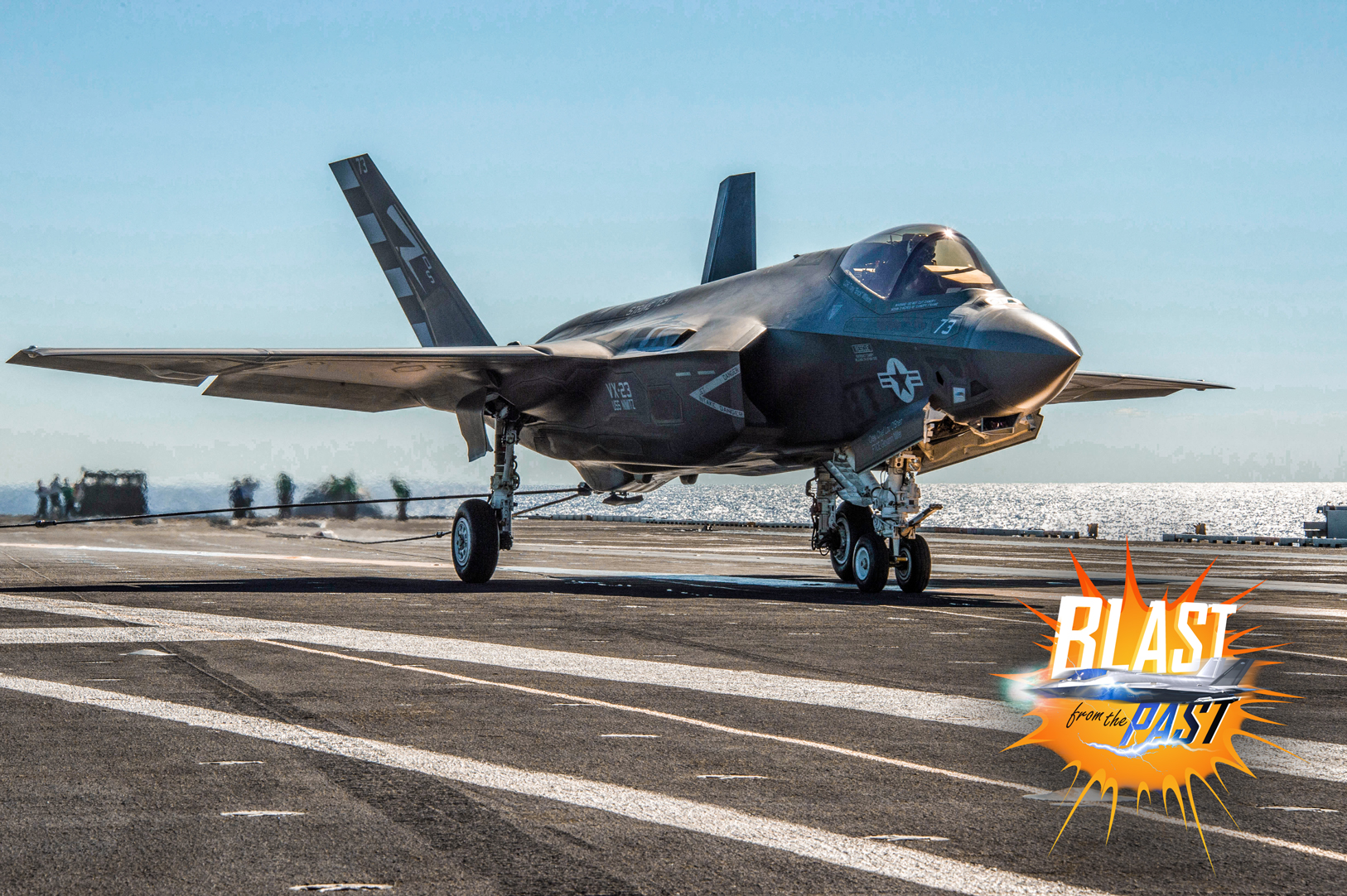-

- November 7, 2022
- "Blast From the Past": F-35Cís First Arrested Landing
-
The F-35C Lightning II is the U.S. Navy’s and Marine Corps’ first low-observable carrier-based aviation platform. The fifth-generation fighter aircraft’s larger wings, stronger landing gear, ruggedized structures, and long-lasting coatings to endure the rough shipboard conditions provide the fleet with a lethal combination of fighter capabilities. It is also intended for launch and recovery aboard naval aircraft carriers.
The Navy made F-35 history Nov. 3, 2014, as an F-35C flight test aircraft conducted the first arrested landing aboard the USS Nimitz (CVN 68) off the coast of San Diego, California. Former-test pilot Navy Cmdr. Tony Wilson completed the exhilarating ship landing.
This milestone is an exciting achievement for the F-35C as it is part of initial at-sea Developmental Testing I. When a plane makes an arrested landing on an aircraft carrier, it decelerates rapidly as it touches down. An aircraft like the F-35 requires a long runway to stop, which a carrier in the ocean does not offer.
An arrested landing aboard an aircraft carrier requires a tremendous amount of skill as the arriving pilot must shut off their engines as soon as the tailhook makes contact in order to achieve a quick and safe stop. In case they are unable to hook on, they must safely continue and fly off the flight deck.
Naval aviation is not complete without arresting gear, or the steel wires used to grab the tailhook and decelerate the aircraft when it lands. The aircraft’s kinetic energy is delivered to the hydraulic damping system attached below the carrier deck during an arrestment when the tailhook engages the wire.
Eight years later, U.S. Sailors and Marines now routinely fly the F-35C and leverage the aircraft’s warfighting capabilities.





